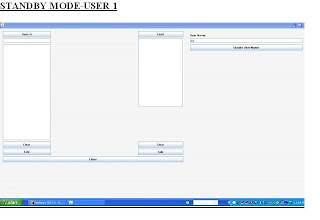Though we benefit a lot from voip peer to peer services, it also suffers from some of problems.
They are:
· If the server goes down, then the entire network crashes.
· It is more expensive to install.
· Needs to be maintained by staff with high IT skills.
A peer-to-peer (or P2P) computer network is a network that relies on the computing power and bandwidth of the participants in the network rather than concentrating it in a relatively few servers. P2P networks are typically used for connecting nodes via largely ad hoc connections. Such networks are useful for many purposes. Sharing content files containing audio, video, data or anything in digital format is very common, and real-time data, such as telephony traffic, is also passed using P2P technology. The term "P2P network" can also mean grid computing.
A pure peer-to-peer file transfer network does not have the notion of clients or servers, but only equal peer nodes that simultaneously function as both "clients" and "servers" to the other nodes on the network.
But with increasing welfare, these are neglected and tried to overwhelm these difficulties








